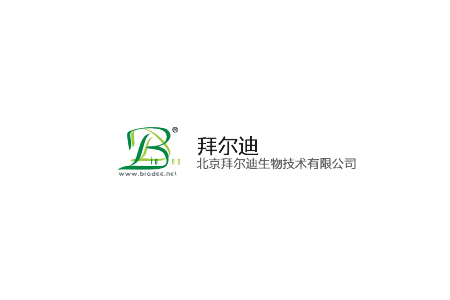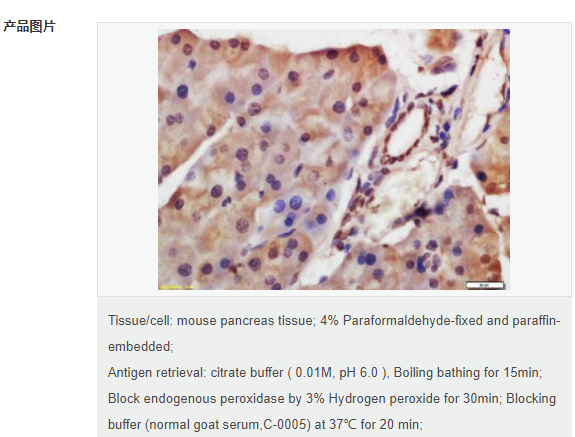

貨號
產(chǎn)品規(guī)格
售價
備注
BN40836R-100ul
100ul
¥2360.00
交叉反應(yīng):Mouse(predicted:Human,Rat,Chicken,Pig,Cow,Horse,Rabbit) 推薦應(yīng)用:IHC-P,IHC-F,IF,ELISA
BN40836R-200ul
200ul
¥3490.00
交叉反應(yīng):Mouse(predicted:Human,Rat,Chicken,Pig,Cow,Horse,Rabbit) 推薦應(yīng)用:IHC-P,IHC-F,IF,ELISA
產(chǎn)品描述
| 英文名稱 | HDAC8 |
| 中文名稱 | 組蛋白去乙酰化酶8抗體 |
| 別 名 | HD 8; HD8; HDAC 8; HDACL 1; HDACL1; Histone deacetylase 8; Histone deacetylase like 1; RPD 3; RPD3; CDA07; Hdac8; HDAC8_HUMAN. |
| 研究領(lǐng)域 | 腫瘤 發(fā)育生物學(xué) 信號轉(zhuǎn)導(dǎo) 細(xì)胞凋亡 轉(zhuǎn)錄調(diào)節(jié)因子 表觀遺傳學(xué) |
| 抗體來源 | Rabbit |
| 克隆類型 | Polyclonal |
| 交叉反應(yīng) | Mouse, (predicted: Human, Rat, Chicken, Pig, Cow, Horse, Rabbit, ) |
| 產(chǎn)品應(yīng)用 | ELISA=1:5000-10000 IHC-P=1:100-500 IHC-F=1:100-500 IF=1:100-500 (石蠟切片需做抗原修復(fù)) not yet tested in other applications. optimal dilutions/concentrations should be determined by the end user. |
| 分 子 量 | 42kDa |
| 細(xì)胞定位 | 細(xì)胞核 細(xì)胞漿 |
| 性 狀 | Liquid |
| 濃 度 | 1mg/ml |
| 免 疫 原 | KLH conjugated synthetic peptide derived from human HDAC8:151-250/377 |
| 亞 型 | IgG |
| 純化方法 | affinity purified by Protein A |
| 儲 存 液 | 0.01M TBS(pH7.4) with 1% BSA, 0.03% Proclin300 and 50% Glycerol. |
| 保存條件 | Shipped at 4℃. Store at -20 °C for one year. Avoid repeated freeze/thaw cycles. |
| PubMed | PubMed |
| 產(chǎn)品介紹 | Histones play a critical role in transcriptional regulation, cell cycle progression, and developmental events. Histone acetylation/deacetylation alters chromosome structure and affects transcription factor access to DNA. The protein encoded by this gene belongs to class I of the histone deacetylase family. It catalyzes the deacetylation of lysine residues in the histone N-terminal tails and represses transcription in large multiprotein complexes with transcriptional co-repressors. Multiple transcript variants encoding different isoforms have been found for this gene. [provided by RefSeq, Oct 2009]. Function: Responsible for the deacetylation of lysine residues on the N-terminal part of the core histones (H2A, H2B, H3 and H4). Histone deacetylation gives a tag for epigenetic repression and plays an important role in transcriptional regulation, cell cycle progression and developmental events. Histone deacetylases act via the formation of large multiprotein complexes. May play a role in smooth muscle cell contractility. Subunit: Interacts with PEPB2-MYH11, a fusion protein consisting of the 165 N-terminal residues of CBF-beta (PEPB2) with the tail region of MYH11 produced by the inversion Inv(16)(p13q22), a translocation associated with acute myeloid leukemia of M4EO subtype. The PEPB2-MYH1 fusion protein also interacts with RUNX1, a well known transcriptional regulator, suggesting that the interaction with HDAC8 may participate in the conversion of RUNX1 into a constitutive transcriptional repressor. Interacts with CBFA2T3. Interacts with phosphorylated SMG5/EST1B; this interaction protects SMG5 from ubiquitin-mediated degradation. Associates with alpha-SMA (smooth muscle alpha-actin). Subcellular Location: Nucleus. Cytoplasm. Excluded from the nucleoli. Found in the cytoplasm of cells showing smooth muscle differentiation. Tissue Specificity: Weakly expressed in most tissues. Expressed at higher level in heart, brain, kidney and pancreas and also in liver, lung, placenta, prostate and kidney. Post-translational modifications: Phosphorylated by PKA on serine 39. Phosphorylation reduces deacetylase activity observed preferentially on histones H3 and H4. Similarity: Belongs to the histone deacetylase family. HD type 1 subfamily. SWISS: Q9BY41 Gene ID: 55869 Database links: Entrez Gene: 55869 Human Entrez Gene: 70315 Mouse Omim: 300269 Human SwissProt: Q9BY41 Human SwissProt: Q8VH37 Mouse Unigene: 310536 Human Unigene: 328128 Mouse Unigene: 208476 Rat Important Note: This product as supplied is intended for research use only, not for use in human, therapeutic or diagnostic applications. |
